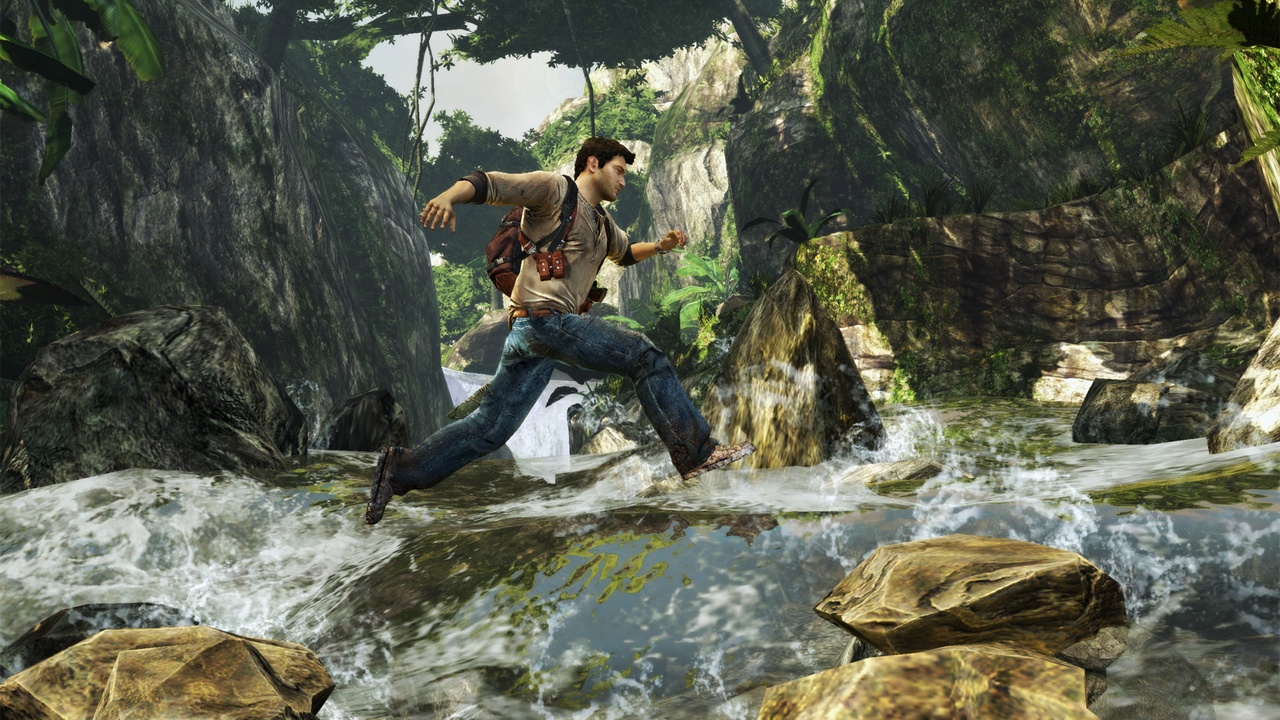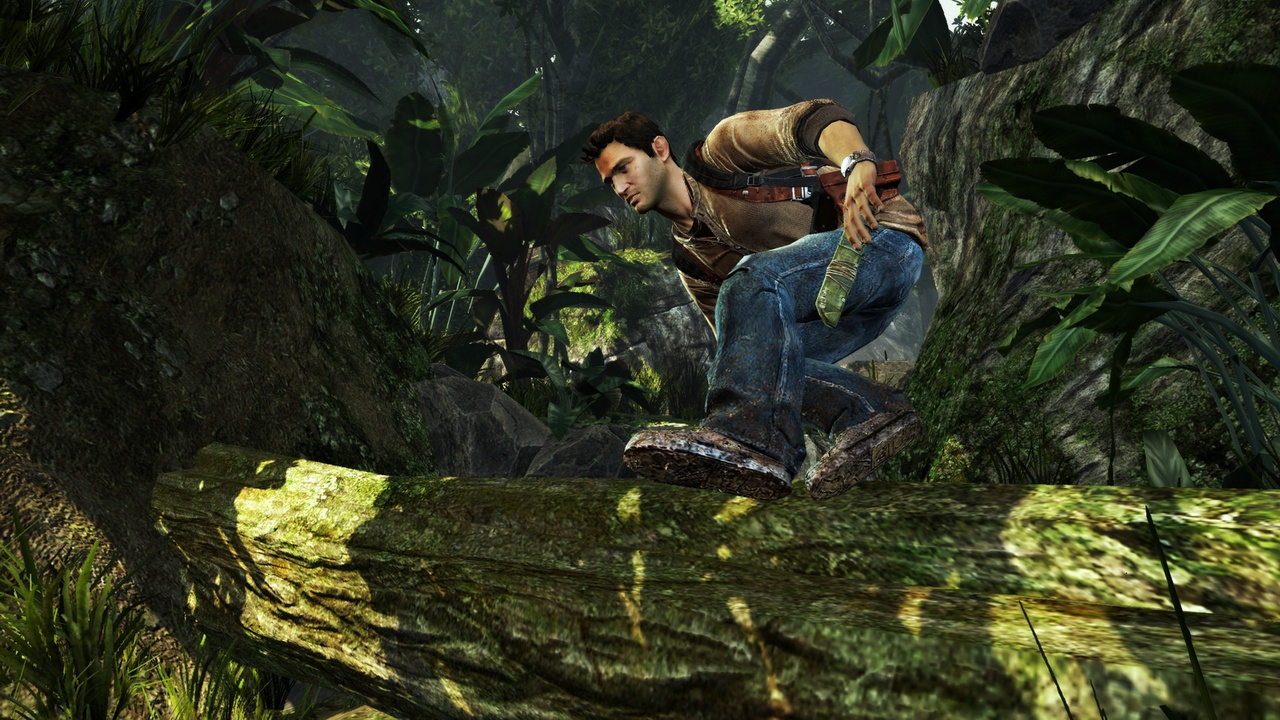E3 2011: Uncharted: Golden Abyss Hands-On Preview - Touching and Tilting in Combat
We take another spin through Sony's portable adaptation of the Uncharted franchise and focus on the game's newfangled NGP controls.
When you think about the Sony franchises best suited for making the transition to the new NGP handheld, Uncharted might not be the first one that comes to mind. With its stunning visuals and movie-quality cutscenes, Uncharted seems like it would lose everything that makes it special if distilled into a portable game. And yet, that's not the case with the upcoming NGP version. Crazy as it sounds, Uncharted on the NGP simply looks like a PlayStation 3 game--perhaps a bit closer to the 2007 original than its stunning 2009 sequel, but a PS3 game nonetheless. Developing a game that looks this good on portable hardware is an impressive feat. But in order to really sell the system, Sony knows that it's going to have to convince people that the NGP's myriad control inputs--with all its touch and motion capabilities--can add something to the Uncharted experience as well.
Hades 2 Is Already An Exciting Sequel With Confident Changes | Technical Test Impressions Firearms Expert Reacts to Fallout 76's Guns Fallout 4 Next Gen Update Comparison Why Are Video Game Adaptations Good Now? | Spot On Fallout 4 Steam Deck Verified Gameplay ALIEN: Rogue Incursion - Announcement Teaser Trailer Stellar Blade - 13 Things I Wish I Knew S.T.A.L.K.E.R. 2: Heart of Chornobyl — Official "Not a Paradise" Trailer Honkai: Star Rail - "Then Wake to Weep" | Version 2.2 Trailer Devil May Cry: Peak Of Combat | Dante: Blazing Tempest Gameplay Trailer SAND LAND — Official Launch Trailer Sea of Thieves Season 12: Official Content Update Video
Please enter your date of birth to view this video
By clicking 'enter', you agree to GameSpot's
Terms of Use and Privacy Policy
Our first look at Uncharted on the NGP was focused primarily on the platforming and exploration half of the game, while our latest look was a good deal more combat-oriented. This new level was a nighttime stealth mission set in the ancient ruins of a lush jungle. Right off the bat you're introduced to a new means of controlling the game using the NGP's fully touch-sensitive screen. Sneaking up behind a guard overlooking a steep cliff, we had the option to dispatch this poor soul using the standard face buttons or by simply tapping the context-sensitive melee button that appears on the screen when you get close enough. It's a button that, thankfully, is placed along the far right edge of the screen so you can move your thumb over a smidge to reach it rather than having to set the (surprisingly large) NGP hardware down and use an index finger. And with that melee takedown button pressed, it was a long, hard fall down the cliff for that poor guard and on to the next batch of enemies for us.
Taking a stealth approach is surprisingly easy with the NGP controls thanks to the system's traditional analog sticks. Unlike with the consistently awkward PSP analog nub, it's easier to give the NGP analog stick a more gradual tilt in order to slowly creep up on a foe before taking him down. And once you're engaged in a shoot-out, having that second analog stick over to the right helps the game feel like its PS3 siblings with full freedom of aiming. The gun combat--for the most part--feels as it should. Things like handguns, AK-47s, and shotguns all feel and sound like they did in previous Uncharted games, while the enemies are more akin to the mortal enemies found in Uncharted 2 rather than the headshot-resistant cyborg pirates found in the original Uncharted.
The big difference comes with certain specialized weapons that have been given entirely different controls designed around the NGP's new hardware. The poster child for this is the sniper rifle. When you look down the scope of the sniper rifle, you then need to aim by physically moving the system around you as though it were a camera and you're trying to get the best angle on a subject. The gyroscope does a pretty good job of picking up subtle movements, though we did experience some unwanted camera drag from the natural shaking of our hands. You can also zoom in on the sniper rifle using the touch panel on the back of the system, pinching and pulling as if you were zooming in and out of a map on an iPhone. We really like the concept behind these sniper controls, but in practice they need to be fine-tuned a bit before you're really going to warm up to them. It felt a little bit awkward and imprecise in this early demo of the game.
Another use of the touch screen in combat comes with the way you throw grenades. In the heat of battle, you'll find a grenade icon on the side of the screen that can be used in two ways. Tap the button, and Drake will lob a grenade in the general direction of his enemies. But hold the button, and you can then drag your finger to the precise location where an enemy is hiding on your screen, complete with an arc showing you the new path of your grenade throw. We actually liked this system for aiming grenades. It's much more precise than tilting the Sixaxis to adjust the arc of a grenade throw on the PS3, and it really lets you get at those guys hiding in pesky spots behind cover. There is that sort of built-in conflict between trying to hunt out an enemy in hiding while your big dumb finger is obscuring part of the screen, but so long as you take a good look at the screen before you start dragging, you're OK.
We could go on about how the touch screen is used in other ways, such as climbing and leaping and whatnot, but that's all territory we covered in our first look at Uncharted NGP a few months ago. Be sure to go back and read those initial impressions if you haven't already, and we'll be sure to update you again once we see more of this new entry in the Uncharted franchise.
Got a news tip or want to contact us directly? Email news@gamespot.com


Join the conversation